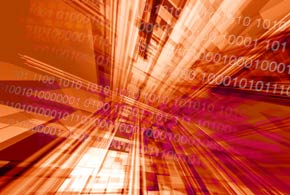Advances in data analytics are transforming and disrupting more than a few industries. But the addition of artificial intelligence is now changing everything in profound ways. At the University of California, San Francisco (UCSF), researchers are using the technology to understand the nature of traumatic brain and spinal cord injuries in a way that wouldn’t have been possible in the past.
“There are diverse outcomes when a person experiences head trauma from a car wreck or other event. The problem, for now, is that there is no standard therapy. Clinicians are often overwhelmed by the decision-making process,” explains Adam Ferguson, an associate professor at UCSF Medical Center and principal investigator for the San Francisco VA Medical Center. Making matters worse, concussion patients and others may display normal brain scans but later develop symptoms such as confusion, behavioral changes or deterioration in vision or hearing.
Understanding why these changes take place is a huge puzzle — particularly with trillions of synapses in the human brain. Identifying specific molecular biomarkers is next to impossible using traditional research methods. However, by tapping AI, “We are able to sift through massively complex biomedical data and research records to find answers that wouldn’t be apparent to humans alone,” Ferguson says. “We are able to work with datasets that contain upwards of 7,000 variables and millions of data points to spot factors and improve diagnosis and treatments methods.”
UCSF has used the AI analytics solution from Ayasdi to migrate from a hypothesis-based framework to a data-driven approach. The researchers feed data volumes as large as 10 gigabytes — which originate from a variety of sources, including brain and spinal cord injury centers around the U.S. — into the machine learning system. It spits out correlations and possible causalities within a few seconds. “The size of the data files isn’t the primary challenge,” Ferguson points out. “It’s the three Vs — volume, velocity and variety — that present a data problem.”
The university, which began using the AI platform and underlying topological data analysis (TDA) technology in 2010, has achieved some remarkable insights using the cloud-based technology. For example, after conducting a meta-analysis of what had previously been $60 million worth of research — legacy data that has essentially been written off as “useless” — the AI algorithm discovered biomarker associations that correlated hypertension to higher risk of traumatic brain injury. “The system clusters individuals into these nodes based on their topological similarity,” Ferguson says. “It can find individuals that share common characteristics.”
Another initiative involved feeding CT scans, MRIs and other data into the AI platform. The researchers examined a group of patients that has no detectable lesions after undergoing tests. “These were people with mild brain injuries but with really serious outcomes. We wanted to identify the predictors of the outcome. We found that the patients who did really poorly also had much higher rates of post-traumatic stress disorder,” Ferguson says. The team is now working to understand whether it’s the cause or the effect of the brain injury. “By assembling the pieces of the puzzle, we will be able to diagnose and treat patients far more effectively,” he concludes.









